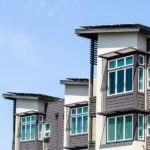What Causes Termites
Your Guide to Safeguarding Your Home Against Termites
The well-known fact about termites is they target and feed on wood. Termites can cause extremely costly structural damages to your home, and since they are silent destroyers, it can take a while until you even notice their presence. If you’re a homeowner, knowing where termites come from and what attracts them to your home will help you better safeguard your property and prevent infestation. MightyMite Termite’s guide to what causes termites in the Bay Area, CA will reveal how termites can infest your home and provide prevention tips so you can better protect your home and property.
Home-Invading Termites
There are over 2,000 known species of termites, but the three most commonly attracted to homes are Subterranean termites, Drywood termites, and Dampwood termites. Each species has its own distinguishing features, behaviors, and food source preferences.
- Subterranean Termites – The Subterranean termite species live underground in soil, and their habitats require moisture. Subterranean termites create tunnels, referred to as mud tubes, to travel from soil to wood. This link between their habitat and their food source gives them the protection they need when working their way above ground. Since they need soil and ample moisture, their damage begins from the ground up.
- Drywood Termites – Drywood termites pose a distinctly different threat. Unlike Subterranean termites that thrive in moist underground soil, Drywood termites require very little moisture and reside within the wood they infest. They aren’t picky with their food sources – they target any material containing cellulose like dry structural wood, dried plants, furniture, wooden picture frames, and even books. Drywood termites can enter homes in several ways, including weak spots in roofing, siding, trim, cracks and crevices in walls, and vulnerable areas in window and door frames. Once they’ve gained access to a home’s interior, they are capable of spreading very quickly throughout many rooms and floors.
- Dampwood Termites – Dampwood termites, as their name implies, thrive in damp, humid environments. Although they’re the least likely of these three species to infest the interior of a home, it is possible should there be enough humidity and moisture present, such as significant water damage or water leaks coming from inside the home. Dampwood termites are similar to the Drywood species because they dwell within the wood they invade. They’ll typically target outdoor wooden structures, especially if the material is decaying or water-damaged, such as old trees, stumps, logs, branches, lumber, firewood, untreated decks, porches, and fence posts.
One of the most common characteristics shared by all three of these species is their ability to swarm. Swarming occurs when reproductive castes of termites emerge from their original colonies in search of new nests. Swarms are necessary to termites’ survival and occur during the warmer months, from spring to early fall. Subterranean and Dampwood termites will seek out areas with a lot of moisture and humidity for their new habitats, while Drywood termites will try to find holes and gaps to enter. Drywood termite entry points can occur in crawlspaces, siding, under eaves, around window and door frames, and under wood roofing shingles.
What Attracts Termites to Homes
Generally, three main characteristics leave your home vulnerable to termite attraction and infestation – wood, moisture, and any openings in the home’s exterior. Any mixture of these factors can attract different species of termites due to their differing preferences.
- Wood – Aside from the attraction to wood already inside your home, wood in contact with your foundation is susceptible to termite infestation. Mulch beds made of softwood are attractive havens for Subterranean termites. Firewood is a softwood packed with cellulose and moisture, and when kept in piles on soil without adequate rain protection or stacked in close proximity to the home’s foundation, termites have an easy way to gain entry into your home. Tree stumps in your yard are also an easy target for termites, as well as overgrown shrubs, vines, and tree branches in contact with your roof. Any unreinforced spots, exposed wood, and under eaves in your roofing system allow termite access. Termites are also known to target outdoor wooden structures like decks, porches, trellises, and fence posts.
- Moisture – Subterranean and Dampwood termites need plenty of moisture for their survival. Any standing water around the home’s foundation is an attractive termite target. Plumbing issues like leaky pipes and faucets and ineffective water drainage from gutter systems will invite termites. Since termites thrive in moisture, poor ventilation causing a buildup of humidity around the foundation can usher termites into places such as the crawlspace.
- Openings in the Home’s Exterior – Since termites are so small in size, they will take advantage of any crack and crevice in the foundation, roof, and walls. While they aren’t resilient enough to breach solid concrete, termites can tunnel their way through a small crack in your foundation’s concrete as small as 1/32nd of an inch wide. Gaps and holes in siding, trim, windows, door frames are all opportunities for termites to enter. Any damage to your roof’s shingles, fascia boards, and eaves will also allow access for termites.
Termite Prevention Tips
Many prevention methods can help keep termites from entering and infesting your home. One of the best ways to safeguard your property is to remove any unnecessary moisture by eliminating standing water, fixing any plumbing leaks, and addressing issues with the gutter system. Gutters should also be kept clean because debris buildup can attract termites. Keep your yard and garden free of debris, such as rooting pieces of wood, foliage, and other organic matter. If you use mulch around your yard, be sure to use a hardwood mulch that helps repel termites and keep the mulch bed at a safe distance away from the foundation.
Firewood should be stored appropriately on a solid, elevated foundation under covered protection and kept at least 20 feet away from the home’s walls. Trim trees so branches can’t act as bridges for termites to enter your home. Seal and reinforce cracks and fissures in walls, roofing, the foundation, and around plumbing and electrical lines. Use window screens to keep Drywood termites from easily accessing your home through windows. And finally, if you need more help avoiding a future infestation, or if you suspect you may have a termite problem, call MightyMite Termite right away to receive a free inspection. Our termite control services are proven to be effective in safeguarding your home.
Your Trusted Source for Termite Control Solutions
MightyMite Termite has delivered effective termite control results to the residents of the Bay Area, CA since 2012. Our termite specialists apply proven methods of termite prevention and eradication with cost-effective, eco-friendly practices, allowing homeowners to gain peace of mind. Every home is unique, and we pride ourselves on developing accurate, innovative solutions to thoroughly assess, diagnose, and eliminate termite infestations with treatment plans custom-tailored to your situation. For more information on termite infestations, contact our professional termite services at MightyMite Termite today!







